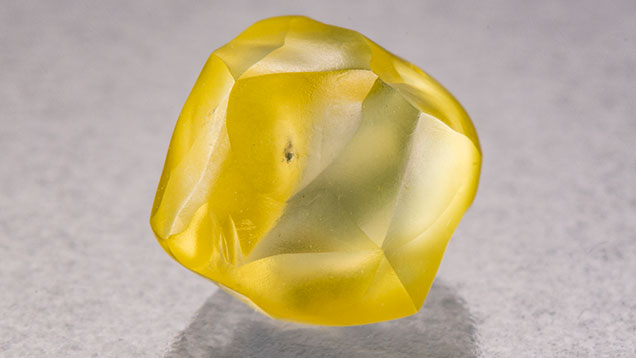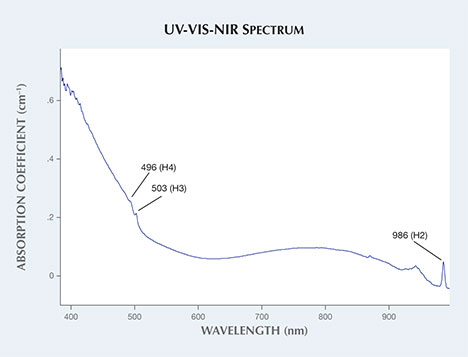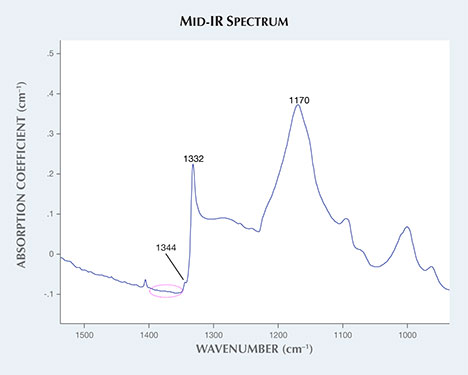Yellow HPHT-Processed Rough Diamond

High-pressure, high-temperature (HPHT) annealing is a very effective method for changing the color of diamonds, particularly those with an undesirable brownish color. This treatment process has been practiced in the trade for more than 15 years. An important feature of this treatment is the etching often left behind on the diamond surfaces. Recently, one loose yellow diamond rough, weighing 2.47 ct and measuring 7.09 × 6.59 × 5.46 mm, was examined in the New York lab (figure 1). Without magnification, the rough had a vibrant yellow color and an overall clean-looking surface. Closer microscopic observation showed a very slightly etched surface, as well as some altered graphitized crystal inclusions in the diamond. Distinctive fluorescence reactions to long- and short-wave ultraviolet radiation similar to those of HPHT-processed material were observed, with a medium chalky bluish green under long-wave and medium to strong greenish yellow under short-wave UV. This was suspect, and further testing was needed. UV-Vis-NIR and mid-IR spectroscopy revealed the rough diamond to be HPHT processed.
The UV-Vis-NIR spectrum, seen in figure 2, showed a rise in absorption from 500 nm, associated with strong H3 (503 nm) and H4 (496 nm) peaks, along with a sharp H2 (986 nm) peak. These are indicative of HPHT treatment. Mid-IR spectroscopy (figure 3) revealed peaks at 1170 and 1332 cm–1, indicating that the starting material of this diamond appeared to be type IaB. The high temperature and high pressure of the treatment created isolated nitrogen with a corresponding absorption peak detected at 1344 cm–1. Occurrence of isolated nitrogen in a pure type IaB diamond is a strong indicator of HPHT treatment.


The majority of HPHT-treated rough diamonds have severely burned, etched, and pitted surfaces. This is the first time we have seen an almost eye-clean yellow rough post-HPHT treatment. With new technologies available to diamond merchants, HPHT processing techniques are becoming more sophisticated, allowing for the retention of carat weight during the cutting process. This case serves as a clear reminder that buying rough does not assure a lack of treatment.



